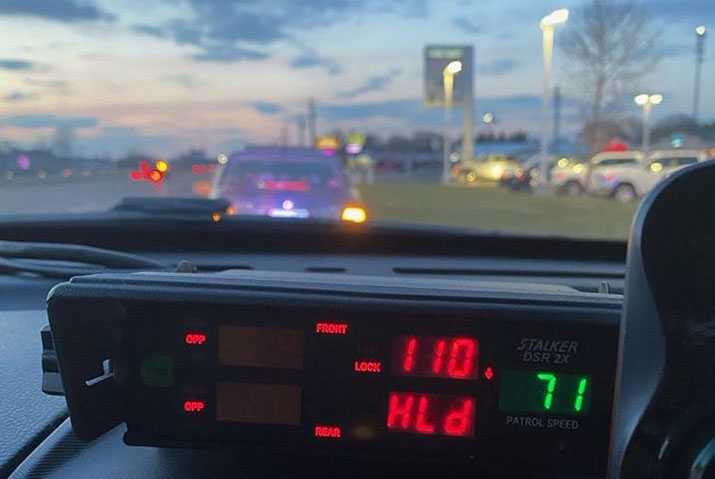Helping the helpers from behind the wheel
May 18, 2020

Mike Hanson was a law enforcement officer for 35 years – 33 with the State Patrol. He’s now the director of the Office of Traffic Safety (OTS), and has watched traffic safety issues ebb and flow over his long career. But never, in all that time, has he seen the type of speed violations we’re seeing now.
Where is all this extra speed coming from? Hanson explains, “When you have half the traffic out there that we had before the stay at home order, there’s a lot more available lane space to use and, frankly, abuse.” Additionally, there seems to be a misperception, because of the COVID-19 crisis, the accompanying challenges for law enforcement, and the increased health risks presented by traffic stops, that law enforcement simply isn’t doing traffic stops anymore. But “nothing could be further from the truth,” says Hanson. “I talk with law enforcement on a weekly basis. They haven’t forgotten; it’s still part of their daily routine.”
On that daily routine, Minnesota law enforcement has seen some memorable instances of speeding. A trooper in Alexandria stopped a driver for going well over 90 mph on I-94; 20 minutes later, another trooper stopped the same driver for – you guessed it – going 91 in a 70 mph zone. In Fridley, law enforcement stopped a driver going 138 in a 60 mph zone. Not only was the driver going 78 mph over the speed limit, but he was also under the influence of alcohol. The combination of the two essentially made that driver a ticking time bomb. And Elk River Police cited a driver for going 110 in a 65 mph zone. His excuse? He was out for a joy ride.
But here’s the thing, says Hanson. “When you’re involved in a collision with that kind of speed, there’s very little your car can do to protect you. You don’t have time to react. The more speed you have, the more energy goes into a crash. The more energy in a crash, the more injury to the human body.”
And the numbers bear it out. As of May 18, there have been 97 traffic deaths reported so far in 2020. In numbers alone, that may not seem so bad – after all, there were 102 deaths reported at this time in 2019. But you have to consider that traffic volume has dropped significantly since the middle of March. In other words, the traffic volume has dropped, but traffic deaths have remained the same. As Hanson puts it, “One is too many; 97 is unacceptable.”
Hanson says that OTS and their law enforcement and traffic safety partners understand there’s no way to enforce our way out of this problem; instead, it needs to be a combination of enforcement, public education and outreach. They’re getting the word out through media, social media, and other channels to make sure that drivers are making good, safe decisions behind the wheel.
In the middle of a pandemic, those decisions are more important than ever. “We already know our healthcare system is stressed to the max with this virus. We don’t want to take those trauma beds, that PPE, away from COVID-19 patients and medical professionals who need them.” It’s on us to help the helpers, and one way to do that is to make safe decisions behind the wheel.

